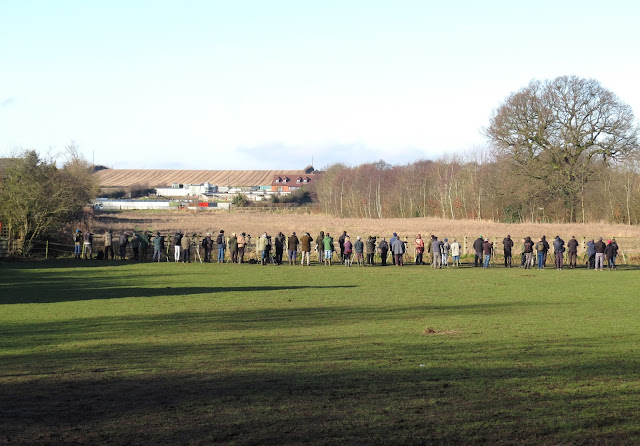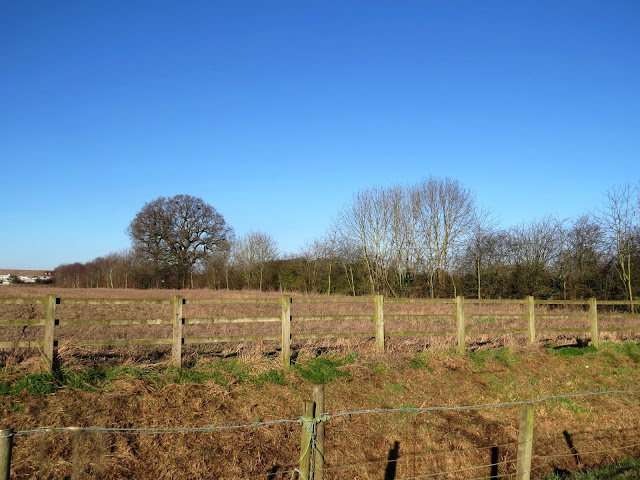Male birds are 9 times out of
10 more striking than their duller female counterparts and Pine Buntings are no
different, with the bright coloured heads of the males a far cry from the drab
and often tricky females! Despite getting reasonable views of the Venus Pools
female in Shropshire earlier in January, the discovery of a fine male bird frequenting
the Dunnington hedgerows a few weeks ago saw us wanting to complete the Pine
Bunting set, and with a free Sunday we made the short journey over to Yorkshire
in the hopes of connecting.
 |
| Piney |
Notoriously tricky birds to
successfully twitch as of late (the Kent bird has also been proving to be
elusive) several people had left unfulfilled having dipped the Dunnington bird
after hours of waiting, some even having missed out even when the bird had
shown due to the sightings being all too brief.
 |
| The assembled Pine Bunting crowd |
Joining the crowd expecting a
lengthy wait and with hundreds of Yellowhammers constantly flitting in and out
of the hedge to search through, we were surprised when after just over half an
hour eagle eyed Alex expertly picked out our male Pine Bunting, having watched
the tiny bird fly in from afar. Perched in the silver birch trees in the hedge
before flying closer into the large oak tree on the right hand side of the
hedge north of the paddock, the strikingly marked bunting remained on view for
only a couple of minutes at max, just long enough to really study the
distinctive facial features and fire off a few record phonescoped shots, before
dropping down in to the hedge and out of sight.
True to its elusive nature, it
didn’t make a reappearance while we stayed on site and it wasn’t until late in
the afternoon that it came on view again – lucky I got up early otherwise we
would have had a very cold and unfruitful day!
With a bright white central
moustacial cheek, grey central crown stripe and rusty brown tones there was
certainly no mistaking this particular individual, and it was great to get a
good look at it perched still and unobscured, especially as the flock was
extremely flighty with birds coming and going on a constant basis. The flock
itself consisted of a mix of hundreds of Yellowhammers and Corn Buntings, with
a handful of Chaffinches, Bramblings and Tree Sparrows thrown in for good
measure – and it was good to see these farmland species were doing well here having
suffered large declines elsewhere.
After this autumn’s phenomenal
influx of Pine Buntings, it was only a matter of time before further wintering
birds were unearthed hiding amongst our British Yellowhammer flocks, and this
is a species that anyone has a chance of finding while searching through their
local wintering flocks. Indeed, with birds turning up on a weekly basis on the
European continent, there is a high possibility that more of these charming
little buntings will come to light in the next couple of months.
Remaining quite elusive, there
are certain areas where the Pine Bunting seems to show fairly reliably after a
wait. As of late, it has favoured the right hand hedgerow and oak tree as
viewed from the paddock, as well as the ground around the obvious fallen dead
tree and surrounding hedgerows a few fields to the right as viewed from the
public footpath to the east of the field.
 |
| The Dunnington hedgerow north of the paddock that the Pine Bunting is making its current home |






Nice birding story :D
ReplyDeleteVisit my blog freeasbird.blogspot.com if you pleased
Regards from Indonesia